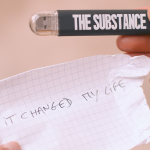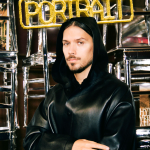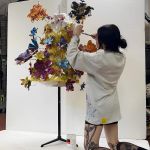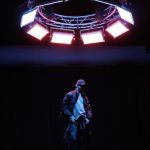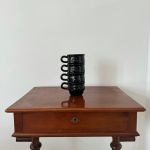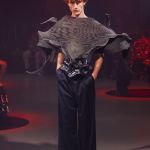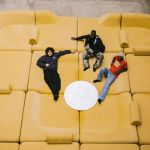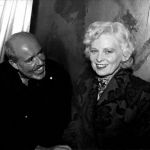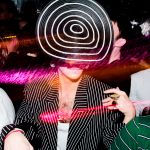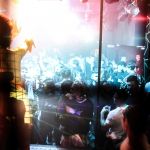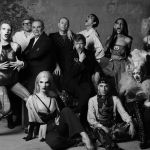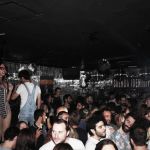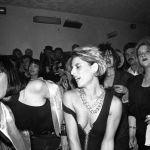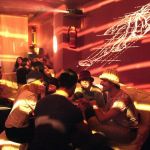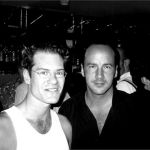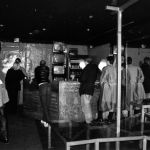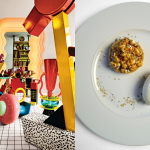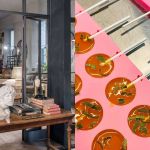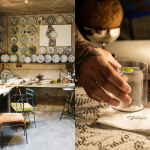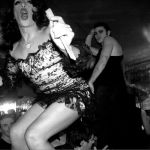
Tribute to Plastic
Milan without Plastic would lose its identity
February 8th, 2020
The club, which has troubled and animated Milanese nights for almost forty years, lost its founder Lucio Nisi last November.
Nisi was from Puglia and went up to Milan in the early '60s. He had a fruit and vegetable shop at the Ortomercato in San Siro, but together with his brother and Nicola Guiducci (well-known Milanese DJ) he opened a club in the early '80s, a kind of Studio 54 close to the Madonnina. It was 1980, golden years for pop music, voguing and the beginning of the struggles of gay rights. Milan was a city in constant fervor, a young Berlusconi took hold in Mediaset, the myth of Heather Parisi was pressing and Lorella Cuccarini formed the young creatives. Originally it was a narrow space, obtained from a former warehouse that overlooked Viale Umbria, a very old one-story building, which it demolished if it had not been for Nisi, but who skillfully knew how to deconstruct it and stitch it up like a shoulder strap in a blazer in the late 70s.
Plastic soon became famous all over the world, it was a place where you had to be there; for the Milanesi, for celebrities and for those who aspired to become one. In the 1980s it was the crossroads of international stars such as Keith Haring, Freddie Mercury, Madonna, and Andy Warhol, Bruce Springsteen and Elton John, Sting, Prince, Boy George, and Vincent Gallo, Jean-Paul Gaultier, John Galliano, and Grace Jones. In Milan, it was the 'place' where it had to be, not only in terms of image but also for the musical selection: 'a mix of electronic new wave and Puccini's arias even before his predecessors like Malcolm McLaren did'. It was the first really gay-friendly place in Milan. A creative laboratory, populated by brilliant artists, designers, architects, musicians, actors, politicians and marchettari. It had its consecration to the mass with the 1981 carnival party, full of new wave, punk, blitz kid and aspirants of success. The looks, the souls and the thoughts dressed Westwood and Armani at the same time but they managed oddly to coexist.
The selection at the entrance has always kept the identity of that place unharmed. The selection that allowed to create a safe haven for the marginalized and ghettoized and gave access only to those who had 'the look, the attitude, the vibe, the desire to appear and be there, and to the regulars. Plastic had been the first in Italy to import this system from New York. The aesthetic of the room was a mix of old crystal drop chandeliers, damask sofas, video windows in the walls, bright mosaic mirrors and a black light in the corridor leading to the room: capable of highlighting traces of cocaine on the faces and on clothes. Aesthetic that had been a source of inspiration for many stylists and creatives, such as Moschino, Krizia, Elio Fiorucci, Stefano Gabbana and the photographer Oliviero Toscani.
For some years at the helm of the club with Tavelli, La Stryxia, Guiducci, Pinky and Tommaso there is Andrea Ratti, resident DJ of Club Domani who every week entertains the unruly crowd for hours with his disco-house mix. Andrea is resident Dj of Club Domani, producer and sound designer of soundtracks for fashion shows and videos.
The nss magazine team had the pleasure of speaking with Andrea to ask him some questions.
Who is here today to carry on the Plastic project?
The main nucleus is formed by Nicola Guiducci, Sergio Tavelli, Pinky, and Tommaso. On Saturday we join Stryxia and Roger Bi to create Club Domani and Al Varietà.
When did you start?
The first time was in September 2009, I think for a fashion party. Then that same year I remember that on a Thursday evening at the old (little!) Rocket in via Pezzotti I played in front of very few people and Nicola and Pinky arrived, who I already knew but had never heard me play. I was terrified. But something must have worked because after that evening Nicola took me to play by his side on Saturday in the legendary JukeBox Hero (the privè of Plastic).
What is your first memory related to Plastic?
My first memory is decidedly vague. I think it was a Friday in 2006 or 2007, so in the London Loves period. I don't remember much except a room full of people who listened and danced that indie rock that in Milan I was convinced I loved only. I never left.
How and in what has it changed? How would you describe it now?
The walls changed with the move in 2012 but the spirit remained unchanged. Having the same people (with very clear ideas) at the helm for almost 40 years, people who have never sat down for a second on the glories of the past but always and only think about tomorrow is the intrinsic strength of the place. Today compared to a few years ago I notice that people, especially the very young, again want to dress, dress up, appear, exaggerate. There is enthusiasm and it is a wonderful thing to observe from the Dj console.
The music selection and the mix of the first? Music at Plastic today?
When I started attending it, music that was rock, Italian songwriting or electroclash. In the last decade, however, things have turned more towards a purer clubbing line, between disco, house, and tech. Sergio and I with Club Domani bet on a formula that was missing in Milan, that is to combine an evening with a strong queer imprint on music that was not Top40, and it worked. The beauty of Plastic, in any case, is that the public is receptive. You can play anything at the right time.
A memory that binds you inextricably to the club?
I'll tell you two: the first is one of the first times I played with Nicola on Saturday, obviously paralyzed by terror. Nicola stayed with me in the console and every now and then he put a piece (absurd) and said to me "go, mix this". A beautiful school. The second is from a few years ago at the Club Domani. I enter the JukeBox and see Lindsay Lohan sitting on a sofa. The only thing to know is that Lindsay Lohan live is exactly what it is expected to be. Ah and a very fast third! Club Domani's first-ever evening, great debut: the smoke machine stops while I play, the fire alarm starts, the music is off, the lights are on for 10 minutes. I wanted to bury myself.
The drag scene in Milan before? And now?
When I attended Sergio and Stryxia's House of Bordello, the drag culture that exists now did not yet exist. It can no longer be said but at the time there was talk of transvestites, not of drag queens. With Club Domani we wanted to introduce a new generation of performers who are the result of this period of enthusiasm in the nightlife I mentioned before. As for Milan in general, it is wonderful to see the constant and pervasive expansion of the thing even outside the clubs.
How do you see the club in 10-20 years?
As I said at the moment, I see a lot of enthusiasm, there is a desire to go out, perform, discover yourself. To allow all this to continue, clubbing as a resource for the city should also be protected at an institutional level, especially given the increasingly international profile of Milan. Already many smaller clubs have disappeared and it is a pity. Places such as the Atomic or the Yellow Submarine were small magnificent subculture which no longer exists. I see an increasing trend towards very large clubs, but I hope it will stop.
What are your future aspirations for the club? What would you like to change?
Obviously continue to grow Club Domani, both inside and outside the walls of Plastic. As for the venue itself, it would be great if PlasMA (Plastic Modern Art), the exhibition space next to the club, reopened in order to inspire many artists who revolve around Plastic but who do not find space to express themselves. We will change, but the atmosphere is and will always be the same.
Years go by, but Plastic remains and the place is sedimented by the experience and vivid memory of the city, still remaining a clear reference point for Milan.





























